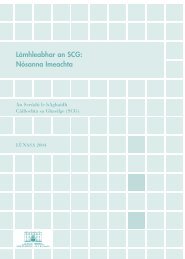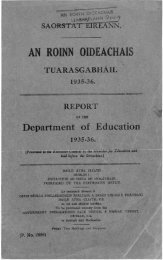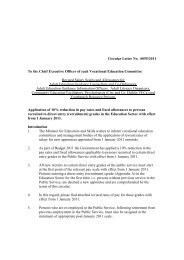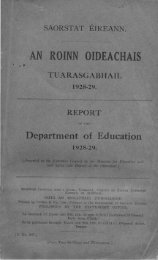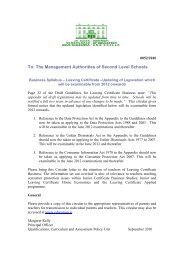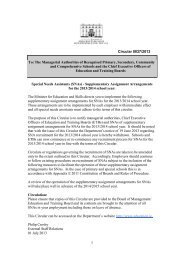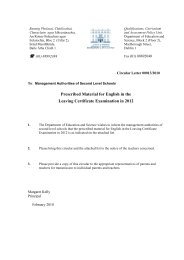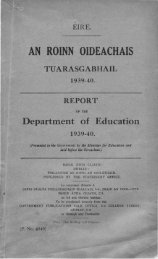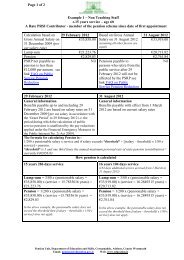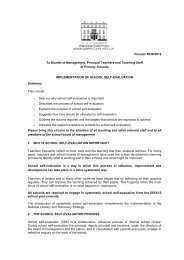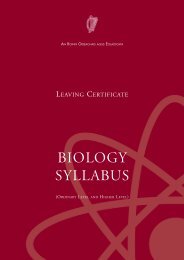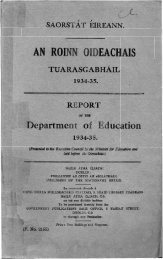1925-1926-1927 - Department of Education and Skills
1925-1926-1927 - Department of Education and Skills
1925-1926-1927 - Department of Education and Skills
- No tags were found...
Create successful ePaper yourself
Turn your PDF publications into a flip-book with our unique Google optimized e-Paper software.
39Equipment for infants' exercises is <strong>of</strong>ten very scanty; blackboards<strong>and</strong> easels are sometimes insufficient. Most schools aresupplied with large wall maps.The planting <strong>and</strong> decoration <strong>of</strong> school grounds cannot be saidto receive as much attention as they deserve. A few schools aremodels <strong>of</strong> what such institutions should be, <strong>and</strong> many are thereverse.ATTE TDANCE.The Compulsory Attendance Act came into force on 1st January,<strong>1927</strong>: this opens a new chapter in the history <strong>of</strong> primary education.Places have been found where there was no visible improvementin regularity, as compared with previous year, but thesewere quite rare. Generally the percentage marks a substantialincrease. There is reason to hope that for the first year it willreach 80, but this figure can be accepted only as an encouragingstart.Unpunetuality in morning attendance at school is occasionallynoticed, but generally the teachers are particular to arrive intime. The children are largely influenced by the teachers' examplein regard to early or late attendance.Underfed <strong>and</strong> ill-developed children are found in considerablenumbers in the towns, but rural pupils in the Midl<strong>and</strong>s are, as arule, healthy. The few who suffer from defective sight are innearly all cases provided with spectacles, but it must be admittedthat attention to decaying teeth is much less common.TEACHERS.The percentage <strong>of</strong> non-efficient teachers is small, <strong>and</strong> the highlyefficient are in very considerable numbers.Among rural or village teachers there is not, however, muchevidence <strong>of</strong> the habit <strong>of</strong> serious reading.At the present day the number <strong>of</strong> teachers who are really wellversed in Irish history, general or local, in Anglo-Irish or Irishliterature, is not large. Folk-lore has not as yet come to begenerally recog-nisedas a subject possessing cultural or educationalvalue.In the general training <strong>of</strong> the children, formation <strong>of</strong> habits <strong>and</strong>character, much remains still to be done. Speaking generally, thetone <strong>and</strong> manners <strong>of</strong> our pupils, especially <strong>of</strong> the boys, are notwhat they should be. In developing personality, the home environmentis <strong>of</strong> outst<strong>and</strong>ing importance, yet the school as a community,influenced largely by the teachers, has also a great share in thework. It is to be hoped the need for such activities will be keptwell in view.



